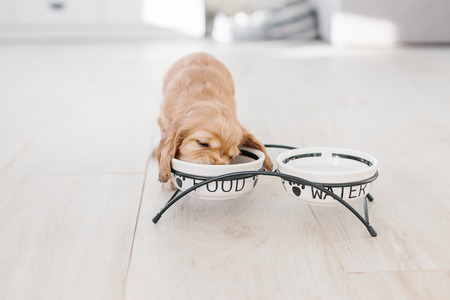1. Visible Wear and Tear
If your pets bed has rips, flattened padding, or stuffing coming out, it might be time for a replacement. Over time, frequent use can lead to fabric fraying, thinning cushions, and even holes that expose the inner materials. Not only does this make the bed uncomfortable, but it can also pose a safety risk if your pet chews or swallows loose stuffing.
Signs of Wear and Tear
Check your pet’s bed regularly for these signs of deterioration:
| Issue | What It Means |
|---|---|
| Torn fabric or holes | Your pet’s claws or teeth may have caused damage over time. |
| Flattened padding | The bed no longer provides proper support for your pet’s joints. |
| Lumpy or uneven stuffing | The filling inside has shifted, making the bed less comfortable. |
| Persistent odors | Bacteria and dirt buildup can create an unhealthy sleeping environment. |
| Visible stains | Old stains may indicate moisture retention, which can lead to mold growth. |
Why It Matters
A worn-out bed can negatively impact your pet’s health. A lack of proper cushioning can cause discomfort, especially for older pets with joint pain or arthritis. Additionally, torn fabric or exposed stuffing can become a choking hazard if your pet tends to chew on their bed.
When to Replace Your Pet’s Bed
If you notice multiple signs of wear and tear, its best to start looking for a new bed. Choosing a high-quality, durable option ensures your furry friend stays comfortable and safe while they rest.
2. Unpleasant Odors That Won’t Go Away
Even after washing, if your pet’s bed still has a persistent smell, it could be harboring bacteria and allergens. Over time, pet beds absorb dirt, sweat, saliva, and even small accidents that may not fully come out in the wash. This can lead to lingering odors that make your home smell less than fresh.
Why Does Your Pet’s Bed Smell Bad?
There are several reasons why your pets bed might develop stubborn odors:
- Bacteria and Mold Growth: Moisture from drool, urine, or water spills can create a breeding ground for bacteria and mold.
- Trapped Dirt and Oils: Pets naturally produce oils that get absorbed into their bedding, leading to bad smells over time.
- Allergens and Dander Buildup: If your pet sheds a lot, dander and fur can collect in the fabric, making it harder to clean completely.
How to Tell If It’s Time for a New Bed
If you’re unsure whether your pet’s bed needs replacing, check the following signs:
| Signs | What It Means |
|---|---|
| The smell returns quickly after washing | The materials have absorbed bacteria and odors that won’t wash out. |
| Your pet avoids their bed | The scent may be unpleasant or irritating to them. |
| Mold or mildew spots appear | The bed retains too much moisture, which can cause health issues. |
| You experience allergies around the bed | Dust mites, dander, or mold could be present in the fabric. |
The Best Type of Pet Beds to Prevent Odor Issues
If youre replacing your pets bed, consider choosing one with these features:
- Machine-Washable Covers: Easily removable covers make cleaning more effective.
- Waterproof Liners: Protects the inner padding from absorbing moisture and odors.
- Mold-Resistant Materials: Look for materials like memory foam with antimicrobial properties.
- Easily Replaceable Inserts: Some beds allow you to swap out inserts instead of buying a whole new bed.
Tips to Keep Your Pet’s Bed Smelling Fresh Longer
You can extend the life of your pet’s bed and prevent odor buildup by following these simple maintenance tips:
- Wash the cover regularly: Try to clean it at least once a week.
- Avoid letting moisture sit: If the bed gets wet, dry it thoroughly as soon as possible.
- Add baking soda before washing: It helps neutralize lingering odors.
- Avoid fabric softeners: They can trap dirt and reduce breathability.
- Sweep around the bed often: Keeping the area clean reduces dust and dander buildup.
If your pet’s bed continues to smell bad no matter how often you clean it, it might be time to invest in a fresh one. Not only will this keep your home smelling better, but it will also provide a healthier resting spot for your furry friend!
![]()
3. Your Pet Avoids Their Bed
If your pet chooses to sleep elsewhere, like the floor or your furniture, their bed may no longer be comfortable or supportive. Pets instinctively seek out cozy and safe spots to rest, so if they’re avoiding their bed, it’s a sign something isn’t right.
Why Your Pet Might Be Avoiding Their Bed
- Lack of Comfort: Over time, pet beds lose their cushioning, making them less cozy and supportive.
- Worn-Out Material: Torn fabric, flattened padding, or exposed seams can make the bed uncomfortable.
- Odor Buildup: Even with regular cleaning, pet beds can trap odors that might discourage your pet from using them.
- Size Issues: If your pet has grown or gained weight, their old bed may no longer fit them properly.
Signs Your Pet’s Bed Is No Longer Comfortable
| Sign | What It Means |
|---|---|
| Your pet sleeps on the floor instead | The bed may not provide enough support or comfort. |
| Your pet prefers your couch or bed | Their own bed might feel too hard, lumpy, or worn out. |
| Your pet circles but won’t settle in their bed | The beds shape or material might be uncomfortable for them. |
| You notice visible wear and tear | A damaged bed can be irritating or even unsafe for your pet. |
What You Can Do
If you notice these signs, it may be time to invest in a new bed. Look for one with proper support based on your pet’s size, age, and sleeping style. Orthopedic beds work well for older pets, while plush beds are great for those who love to burrow. Choosing a washable cover can also help keep odors under control and ensure long-term comfort.
4. Increased Scratching or Restlessness
If your pet is constantly scratching at the bed or shifting around uncomfortably, it might not be providing the right support anymore. Pets need a comfortable and secure place to rest, and if their bed isnt meeting their needs, they may exhibit signs of frustration or discomfort.
Why Does This Happen?
There are several reasons why your pet may be scratching excessively or unable to settle down on their bed:
- Worn-Out Padding: Over time, beds lose their cushioning, making them less supportive.
- Uncomfortable Material: Some fabrics can become rough or irritating, especially for pets with sensitive skin.
- Lack of Proper Support: Older pets or those with joint issues may need orthopedic support to feel comfortable.
- Pests or Allergens: Dust mites, fleas, or allergens in the bedding can make resting unpleasant.
How to Tell If It’s Time for a New Bed
| Sign | Possible Cause |
|---|---|
| Your pet scratches at the bed frequently | The fabric is irritating or worn out |
| Your pet gets up and moves around often | The bed no longer provides enough comfort |
| Your pet avoids the bed altogether | There could be an issue with cleanliness, pests, or overall wear |
| The bed looks flat or misshapen | The padding has deteriorated and no longer offers proper support |
What You Can Do
If you notice these behaviors, consider replacing your pet’s bed with one that better suits their needs. Look for options with high-quality padding, breathable materials, and easy-to-clean covers. For older pets or those with joint pain, an orthopedic bed can make a big difference in their comfort and sleep quality.
Quick Tips for Choosing a New Pet Bed:
- Opt for memory foam or orthopedic support for senior pets.
- Choose a machine-washable cover for easy maintenance.
- Select a size that allows your pet to stretch out comfortably.
- Avoid materials that trap heat if your pet tends to overheat.
Paying attention to these small signs can help ensure your pet stays happy and well-rested. If you’ve noticed increased scratching or restlessness, it might be time to start shopping for a new and improved bed!
5. Allergy or Skin Issues
A worn-out or dirty bed can accumulate dust mites and allergens, leading to skin irritation or increased allergies for your pet. If you notice your pet scratching more than usual, developing red patches, or sneezing frequently, their bed might be the culprit.
Common Signs of Allergy or Skin Issues
| Sign | Description |
|---|---|
| Excessive Scratching | Your pet constantly scratches, even without fleas. |
| Red or Irritated Skin | Patches of redness or rashes appear on your pet’s body. |
| Frequent Sneezing | Your pet sneezes often, especially after resting on their bed. |
| Watery Eyes | Their eyes appear teary or irritated. |
How an Old Bed Contributes to Allergies
Over time, pet beds collect dust mites, pollen, and bacteria. These allergens can trigger reactions in sensitive pets, making them uncomfortable and restless. Regular washing helps, but if the bed is too old, replacing it is the best solution.
Tips for Choosing an Allergy-Friendly Pet Bed
- Hypoallergenic Materials: Look for beds made with allergy-resistant fabrics.
- Washable Covers: Choose a bed with removable and machine-washable covers.
- Dust-Mite Resistant Filling: Opt for memory foam or other materials that resist allergens.
- Proper Ventilation: Ensure the bed allows good airflow to prevent moisture buildup.
If you suspect your pets bed is causing allergies or skin issues, consider replacing it with a cleaner, hypoallergenic option. A fresh bed can make a big difference in their comfort and health.


